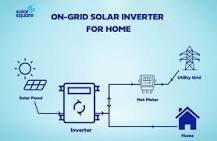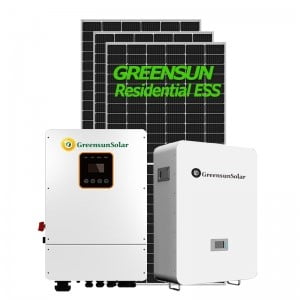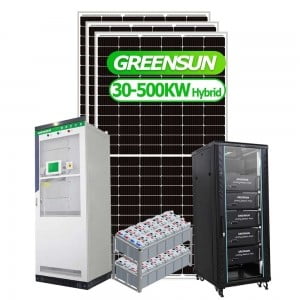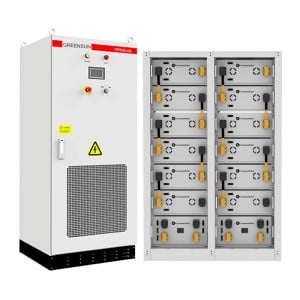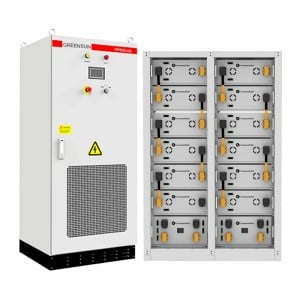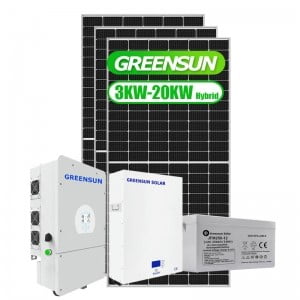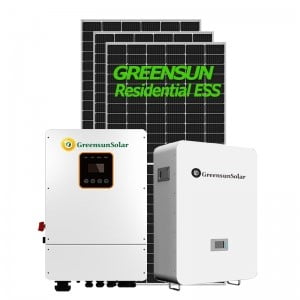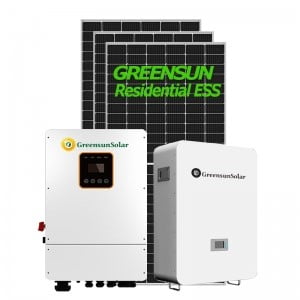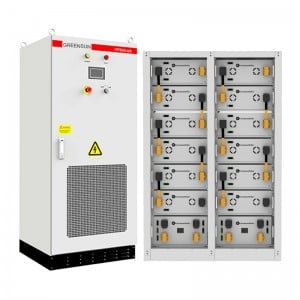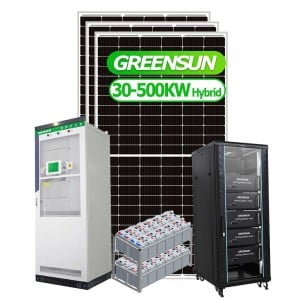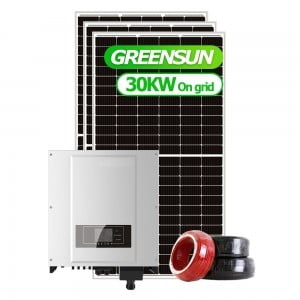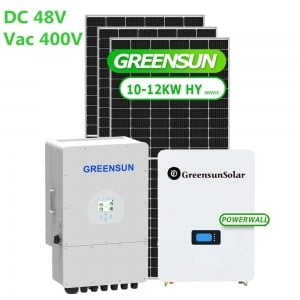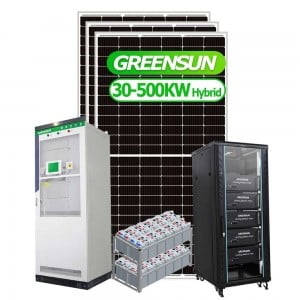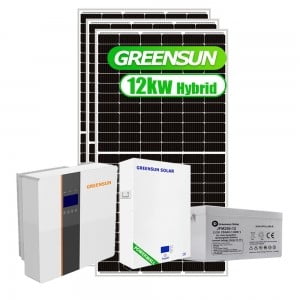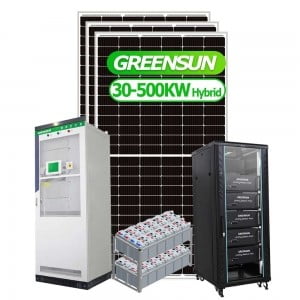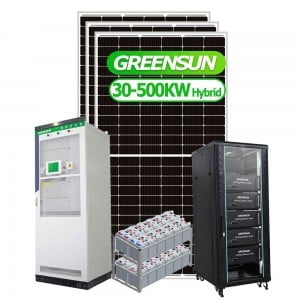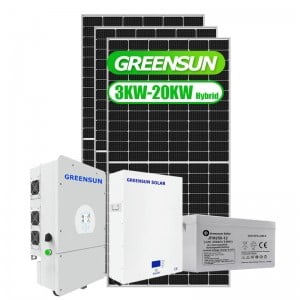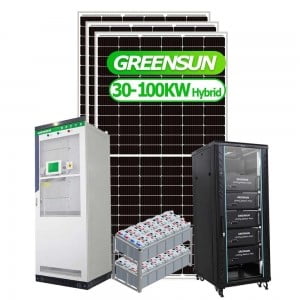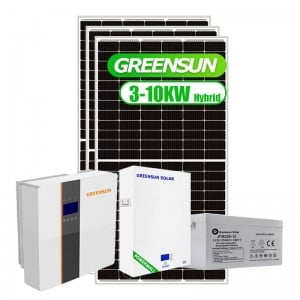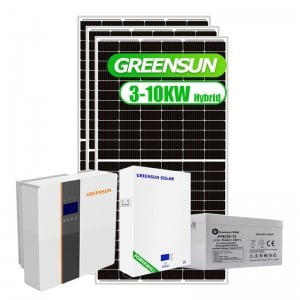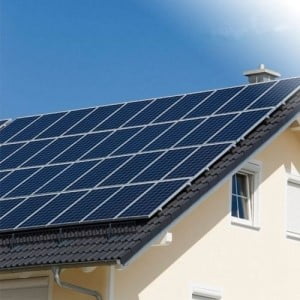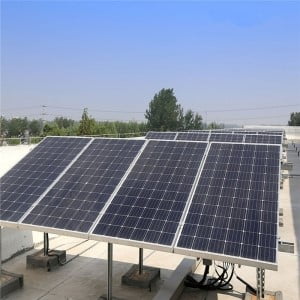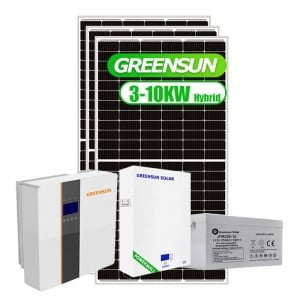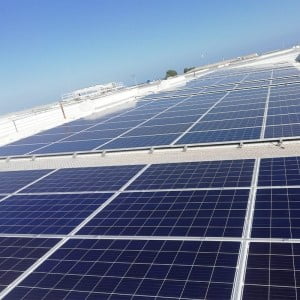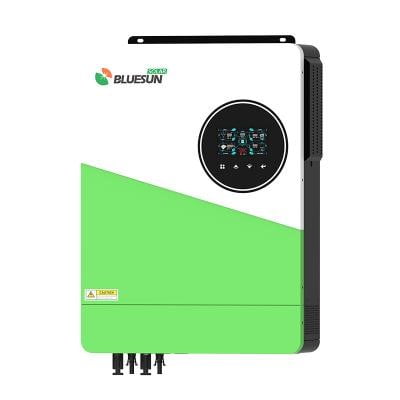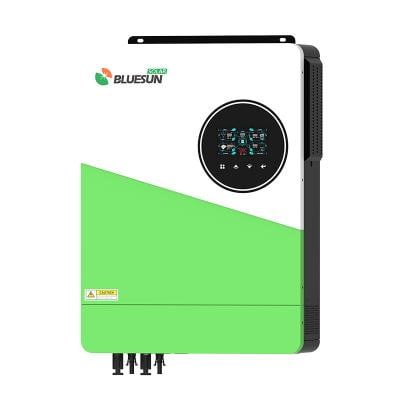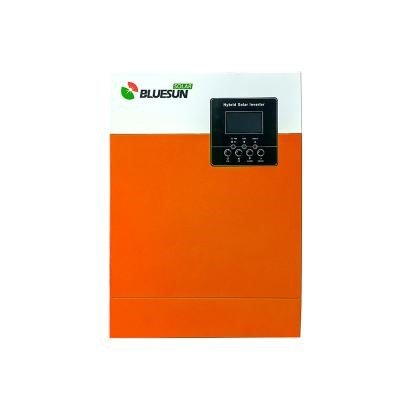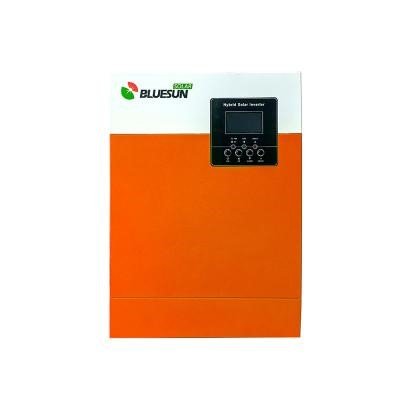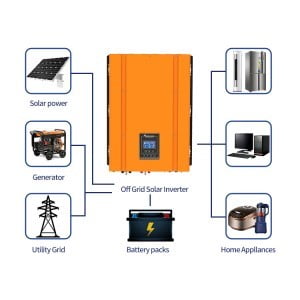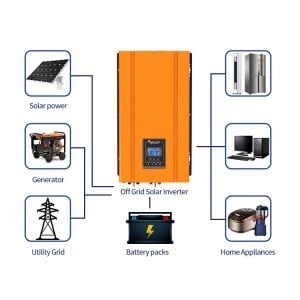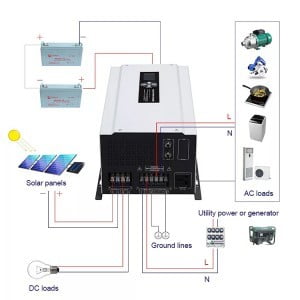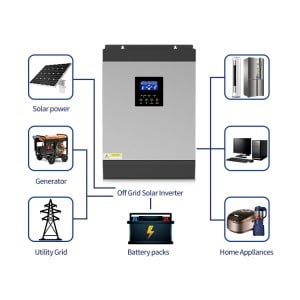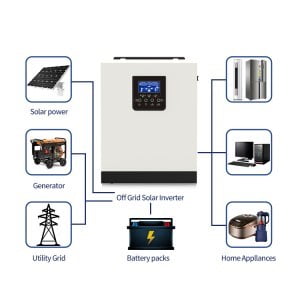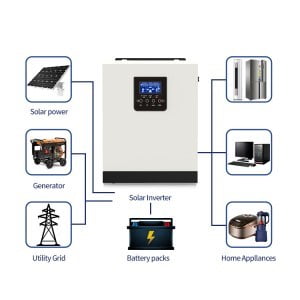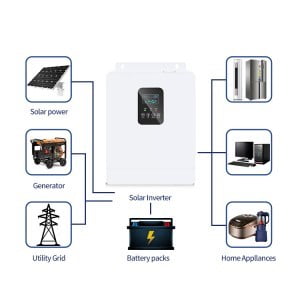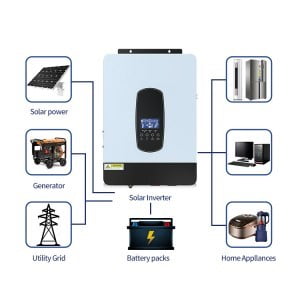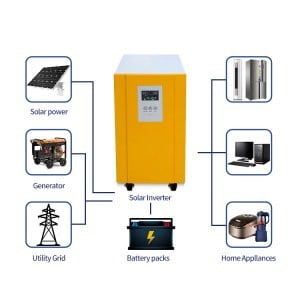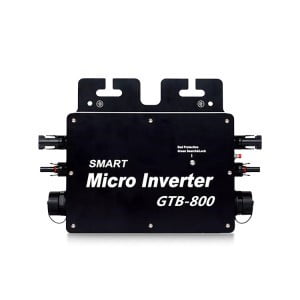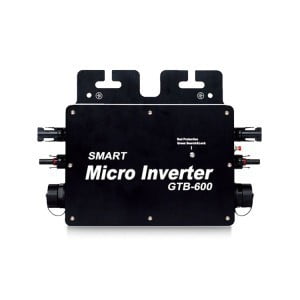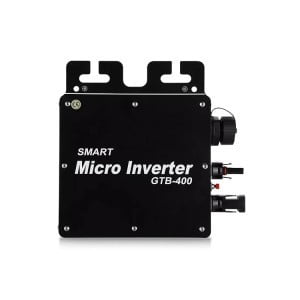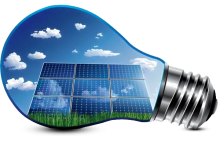When choosing a system, one of the major decisions you’ll need to make relates to whether you want a grid-tied, off-grid, or hybrid solar system.
These three types of solar systems all offer different levels of flexibility and energy independence, but which one works best for you depends on several factors.
We’ll look at how grid-tied solar systems differ from off-grid and hybrid systems, along with some of the key benefits to help you know which type is best for your home or business.
What is a grid-tied solar system?
A grid-tied solar system is, as the name suggests, a solar energy system that is connected to the main electricity grid. They can operate without being connected to a solar battery, making them the most simple, cost-effective, and popular type of solar system. The primary function of an on-grid solar system is to generate electricity from solar panels and feed it directly into the grid. This electricity is then utilised by a homeowner or business, offsetting a reliance on utility-supplied power. Perhaps the power you receive in your home from your electricity supplier comes from a renewable source like solar. You may use a hybrid of private solar panels and grid-supplied power.
How does a grid-tied system work?
Grid-tied solar systems are the simplest type of solar system, with different equipment and layout required compared with off-grid and hybrid solar systems. The basic premise of a grid-tied system is to connect a building to both the main electricity grid and a solar array, so power from either or both can be used.
As there is no energy storage equipment in a grid-tied system, any power generated by the solar panels that is not used immediately is automatically fed into the main grid. When energy generation from the panels is insufficient to match energy usage, the system automatically draws power from the main grid to make up the shortfall. One significant advantage of on-grid solar systems is the ability to take advantage of net metering. Excess electricity generated using your own privately owned PV array during the day can be fed back into the grid, earning credit that can be used to offset electricity consumption during periods of low solar production. This allows you to reduce electricity bills and even make revenue.
What makes them different to other solar systems?
The main types of solar systems to choose from are grid-tied, off-grid, and hybrid. A grid-tied system is, as we’ve covered above, linked to both the solar panels and the main grid. This means that you can draw power from either the panels or the grid, and also automatically feed excess solar power into the grid. As such, different equipment is used to that used in off-grid systems.
Off-grid systems differ in that they are not linked to the main electricity grid. Instead, they operate as a closed system, making them ideal for areas that do not have grid access. To ensure reliable access to power, off-grid systems will generally also include a battery system and a backup generator. Off-grid solar systems, or standalone or independent systems, operate independently of the grid. These systems are typically found in remote areas with limited or nonexistent grid access.
Off-grid solar panel systems are self-sustained, relying on solar panels, batteries, charge controllers, and inverters. The kit generates, stores, and distributes electricity. Store excess energy in batteries for use during times of low solar production, such as at night or during cloudy days.
Hybrid solar systems combine some of the elements of the other two systems, making them an attractive option for those looking for flexibility. Hybrid systems include solar panels, batteries, and a grid connection, as well as a generator in some cases. This means users can dynamically switch between energy sources depending on price, energy production, and energy usage.
A hybrid system is mainly composed of a grid connection, solar panels, a hybrid inverter, batteries, and a generator in some cases.
Advantages of a grid-tied solar system
Grid-tied solar systems have several key advantages that contribute to them being the most popular type of solar setup. These advantages include:
Cost-effective installation
As the simplest type of solar setup, grid-tied solar systems require less equipment, mainly due to the fact that they are the only type of solar system that doesn’t require a battery. This makes them more straightforward to install than other options, such as off-grid or hybrid systems. This simplicity generally translates to savings for the customer, making grid-tied solar the most accessible form of solar power for most people.
Flexible, reliable power
Having your energy supply linked to both solar panels and the main grid offers all the major benefits of solar (such as cheaper power and a lower carbon footprint), but still gives you the reliability of the grid.
Cheaper electricity
Arguably the greatest benefit of a grid-tied system over an off-grid system is the ability to feed excess electricity into the grid. This process earns you credit from your energy provider, which can reduce the cost of your energy bill significantly.
Equipment required for a grid-tied system
As grid-tied systems are connected to both a solar panel array and the main grid, they require some specialized equipment. For example, grid-tied systems need a grid-tied inverter (GTI) (such as a suitable central inverter, string inverter or microinverter). These inverters convert the direct current (DC) from your solar panels to alternating current (AC) to feed into the grid and to power appliances.
Microinverters can also be used in a grid-tied system, and can make your solar setup more efficient when compared with standard grid-tied inverters.
Another key piece of equipment is a two-way power meter. A power meter measures the electricity going from your system into the grid, and from the grid into your system.
How much does a grid-tied solar system typically cost?
Accessible, cost-effective solar power
Grid-tied solar systems are the most popular solar systems for good reason. They offer the greatest flexibility, accessibility, and cost-effectiveness for more customers, offering an excellent way to benefit from solar power without investing in an overly complex, expensive system.
What is a solar on-grid inverter?
The on-grid solar inverter is an imminent part of the on-grid solar system. It performs the crucial task of converting the Direct Current (DC) to Alternating Current (AC). Moreover, these solar inverters regulate the current flow. All domestic and commercial solar systems come with a solar inverter.
Which is better, on-grid, off-grid, or hybrid?
In terms of energy storage, on-grid systems do not need storage; off-grid systems use very large storage, and hybrid systems use a storage size depending on load requirements. In an on-grid solar system, when there’s no power from the national grid, there is a blackout (if there’s no storage).
Once again in simple way: what do these terms mean?
On-Grid System
An on-grid system is also known as a grid-tied system. It is one that works with your local utility’s company e.g Distribution companies.
How? The system generates electricity for your home and sends the excess power generated into the national electric grid for compensation (made possible through feed-in tariffs or net metering) from the distribution company.
Off-Grid System
On the other hand, an off-grid system is a system that is totally independent of the national electric grid. There are houses and communities that are far from the grid and have no hope of being connected in years to come. Individuals in cities who were formerly connected to the grid can also decide to go off-grid.
Hybrid System
Hybrid systems are systems that have two generation sources e.g a solar powered system with storage and a generator. It combines the best approaches of both on-grid and off-grid systems. It could be connected to the national electric grid too.
Hybrid Solar system, Off-grid solar syste and On-grid solar system.
UL, CE, TUV, IEC, ISO,,,etc Certificates.
Solar power systems are mainly divided into three categories: grid-tied systems, hybrid solar systems, and off-grid solar systems.
Hybrid solar energy storage systems has mainly four kinds: On grid and off grid solar energy storage system, on grid solar energy storage system, off grid solar enegry storage system and microgrid solar energy storage system On off grid solar system is the real hybrid solar system, which can sale extra electricity to national grid, local grid also can charge storage batteries via hybrid inverter. Our hybrid inverter follow the standard of UL1701, CSA, VDE, CE, TUV,,,etc, 10 years warranty.
Hybrid solar energy storage systems has mainly four kinds: On grid and off grid solar energy storage system, on grid solar energy storage system, off grid solar enegry storage system and microgrid solar energy storage system
Hybrid solar energy storage systems has mainly four kinds: On grid and off grid solar energy storage system, on grid solar energy storage system, off grid solar enegry storage system and microgrid solar energy storage system
MPPT 6KW On-Grid Solar Inverter
Most homes use alternating current, but most solar panels generate direct current. Solar inverters convert direct current to alternating current. Because of this, unless your solar system is only running DC, inverters are often the heart of both off-grid and grid-tied solar systems. In on-grid…
Description
Most homes use alternating current, but most solar panels generate direct current. Solar inverters convert direct current to alternating current. Because of this, unless your solar system is only running DC, inverters are often the heart of both off-grid and grid-tied solar systems. In on-grid systems without battery packs, the DC power goes directly to the inverter and then into the home as AC power. The excess AC power is sent “backward” through specially made two-way meters and exported to the grid for use by others. Your electricity meter runs forward or backward, depending on when you are buying or selling electricity.
According to data from the Federal Ministry of the Environment, the maximum annual electricity consumption for a family of four in Germany is 3,500 kWh, and each person spends an average of 400 euros per year on electricity bills. This MPPT 6KW on-grid solar inverter can offset most of your electricity bills. Electricity consumption, greatly reducing your electricity bill every month, is an optimal investment choice!
MPPT 6KW on-grid solar inverter as a small intelligent inverter solution, for your residential PV system to provide a better choice. Compatible with maximum capacity high-capacity PV panels. The PV voltage can reach 600V, the AC/DC ratio can reach 1.5, the highest efficiency can reach 97.6%, and the power generation is higher.
MPPT 6KW on-grid solar inverter
Advantages
- Max. Efficiency to 97.6%
The on-grid inverter is the most efficient and technologically advanced inverter in the current solar power generation system.
- Flexible use
MPPT 6KW on-grid solar inverter supplies the power required by the load. Large-screen LCD display, all parameters can be adjusted. It can be used as a single grid connection system or as a large solar array.
- Advanced MPPT tracking technology
Improve the efficiency of the entire solar power system – because of the MPPT function. So, every panel is working at the maximum.
- Safty and Reliable
Low power consumption, over-current protection, over-temperature protection, anti-islanding protection, reverse polarity protection, etc.
Parameter
Q: How many types of solar inverters can be divided into?
A: Solar inverters can be divided into three categories: stand-alone inverters, on-grid inverters, and hybrid solar inverters.
Q: What is an on-grid solar inverter?
A: The grid-tied solar inverter matches the sine wave provided by the utility. For safety, grid inverters are designed to automatically shut down when power is lost. They do not provide backup power during utility outages.
Q: How to choose the right inverter for your solar system, string inverter, or central inverter?
A: Whether to use a central inverter or string inverter is a case-by-case decision based on two factors: (1) total system cost (including space constraints) and (2) total energy production.
Till now, we have installed more than 80000 power stations in China. Below are part of the projects.
BSM-10200LV-48 10KW 220V / 230V
Bluesun Home Use High Frequency Solar Inverter 10KW Pure Sine Wave Solar Inverte
BSM3500LV-24 3.5KW 220V / 230V
Bluesun Home Use 3.5KW 5.5KW Off Grid Solar Inverter
BSM5500BLV-48 5.5KW 220V / 230V Max Parallel to 12 Units
Bluesun Off Grid Solar Inverter 5Kw 5.5Kw Solar Power Inverter
100KW Solar Power Inverter System
We supply 100kw/120kva off grid three phase solar power inverter with isolated transformer.
Product Introduction
The Off-Grid solar inverter 120KVA/108KW models designed with DSP digital control technology, it is combined with pulse-width modulation (SVPWM), disturbance MPPT control and multi-level control technology to enable the inverter to track the maximum power of solar panels fast.
It is a pure sine wave inverter designed specially for the most demanding renewable energy applications. This series inverter is powerful, easy-to-use, and cost-effective, and is suitable for small and large power requirements.
Its secure power supply feature provides good quality power with regulated voltage and frequency to the loads, and it is featured with energy storage and staggering power consumption as well. It is an ideal inverter for medium-sized or large-scale residential, commercial and industrial PV applications which are off the grid, such as village, farm, factory, office building and islands etc.
Feature of the 100kw solar power inverter system
Specifications of the 100kw solar power inverter system

